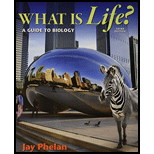
To review:
The three ways in which the immune system combats pathogens.
Introduction:
The immune system is said to have three lines of defense – physical, non-specific and specific.
Explanation of Solution
The immune system has levels at which it defends the body against pathogens.
Physical barriers make up the first level of defense, by preventing the pathogens from entering and establishing infection in the body. The skin, hair in the nose and ears, and the mucus membranes are examples of physical barriers. They also secrete some chemicals that stop the growth of pathogens.
Non-specific immunity refers to the immune cells that attack all foreign objects, without specifically attacking one type of pathogen. This type of defense is rapid and is seen in almost all multicellular organisms. This is also called innate immunity since we are born with it.
Specific immunity refers to the cells and molecules that recognize specific pathogens, remember them and attack them strongly when they re-enter the body. This is slow to activate, but offers the best protection once activated. This is also called adaptive immunity.
Physical barriers are the surfaces such as the skin, hair and the mucus membranes, that prevent the entry of pathogens into the body. Non-specific immunity refers to the immune cells that recognize any foreign object and attack it rapidly, without being specific to one pathogen. Specific immunity refers to the immune cells and molecules that recognize and fight off specific pathogens, that the body has been previously exposed to.
Want to see more full solutions like this?
Chapter 26 Solutions
What is Life? A Guide to Biology 3e & LaunchPad for Phelan's What is Life? (Six Month Access) 3e
- Not part of a graded assignment, from a past midtermarrow_forwardNoggin mutation: The mouse, one of the phenotypic consequences of Noggin mutationis mispatterning of the spinal cord, in the posterior region of the mouse embryo, suchthat in the hindlimb region the more ventral fates are lost, and the dorsal Pax3 domain isexpanded. (this experiment is not in the lectures).a. Hypothesis for why: What would be your hypothesis for why the ventral fatesare lost and dorsal fates expanded? Include in your answer the words notochord,BMP, SHH and either (or both of) surface ectoderm or lateral plate mesodermarrow_forwardNot part of a graded assignment, from a past midtermarrow_forward
- Explain in a flowcharts organazing the words down below: genetics Chromosomes Inheritance DNA & Genes Mutations Proteinsarrow_forwardplease helparrow_forwardWhat does the heavy dark line along collecting duct tell us about water reabsorption in this individual at this time? What does the heavy dark line along collecting duct tell us about ADH secretion in this individual at this time?arrow_forward
 Human Biology (MindTap Course List)BiologyISBN:9781305112100Author:Cecie Starr, Beverly McMillanPublisher:Cengage Learning
Human Biology (MindTap Course List)BiologyISBN:9781305112100Author:Cecie Starr, Beverly McMillanPublisher:Cengage Learning Medical Terminology for Health Professions, Spira...Health & NutritionISBN:9781305634350Author:Ann Ehrlich, Carol L. Schroeder, Laura Ehrlich, Katrina A. SchroederPublisher:Cengage Learning
Medical Terminology for Health Professions, Spira...Health & NutritionISBN:9781305634350Author:Ann Ehrlich, Carol L. Schroeder, Laura Ehrlich, Katrina A. SchroederPublisher:Cengage Learning Human Physiology: From Cells to Systems (MindTap ...BiologyISBN:9781285866932Author:Lauralee SherwoodPublisher:Cengage Learning
Human Physiology: From Cells to Systems (MindTap ...BiologyISBN:9781285866932Author:Lauralee SherwoodPublisher:Cengage Learning Biology: The Dynamic Science (MindTap Course List)BiologyISBN:9781305389892Author:Peter J. Russell, Paul E. Hertz, Beverly McMillanPublisher:Cengage Learning
Biology: The Dynamic Science (MindTap Course List)BiologyISBN:9781305389892Author:Peter J. Russell, Paul E. Hertz, Beverly McMillanPublisher:Cengage Learning





